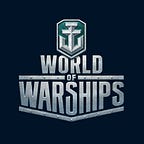Hr.Ms. Friesland (D 812): Onderzeebootjager
Discover the story of a Dutch destroyer of the Cold War era!
This ship became the lead ship of the second post-war series of destroyers in the Royal Netherlands Navy. She was officially classified as a submarine hunter (onderzeebootjager), but was so close to contemporary destroyers in terms of her specifications that both allies and potential opponents of the Netherlands used this designation. Friesland served in the Navy for more than 20 years and took part in a number of important diplomatic missions.
History
After World War II, the Netherlands had to rebuild their Navy from scratch. In 1948, twelve Holland-class destroyers were ordered: six were to be finished by 1952 and six more — between 1953–1955. However, the country’s industry still hadn’t recovered from the war and failed to complete the order. As a result, only four destroyers of this class were laid down between 1950–1951, and built by 1955. The engineers working on the ships were able to use some main power plants which had been produced for four pre-war destroyers in 1940, and which had sat unused gathering dust in storage during the German occupation. The eight ships that followed were built according to a modified project with another type of power plant. They became the Friesland-class destroyers. In the autumn of 1948, the Shipbuilding Bureau (Bureau Scheepsbouw) of the Naval Ministry developed an improved project — Submarine Hunter 1949.
Just like the preceding Holland class, the Friesland-class destroyers didn’t carry any torpedoes. However, despite being similar on the outside, the new ships were faster and carried a more powerful armament. Foreign components and approaches were widely implemented — the main power plant was constructed by a U.S. license, their turbines were similar to those of the Gearing class, and all the artillery was developed by the Swedish company Bofors.
On December 17, 1951, the first ship of the new project was laid down at the NDSM shipyard in Amsterdam — HNLMS Friesland. She was commissioned on March 22, 1956. The new ship was named after the Netherlands province, Friesland. Just like same-class ships, the new destroyer became the Navy’s work horse.
Courtesy of The Netherlands Institute of Military History.
In July 1956, Friesland, together with cruiser HNLMS De Zeven Provinciën and destroyer HNLMS Zeeland, sailed off on an important diplomatic mission. It was the first time since 1914 that Dutch ships went on an official visit to Russia. The Netherlands delegation was to visit Leningrad.
For post-war Dutch sailors, the Soviet Union was no less mysterious than the New World for their forefathers. However, a cordial and solemn reception awaited the Netherlands ships, first in Kronstadt and then in Leningrad. The residents of Leningrad and the Dutch sailors quickly found a common language, albeit with the help of translators.
Courtesy of The Netherlands Institute of Military History.
Having completed her diplomatic duty, Friesland set out to defend the interests of the Netherlands in the Caribbean, and especially in the Southeast Asia. The former Dutch colony Indonesia was contesting the ownership of the western part of New Guinea island, which was under the control of the Netherlands. Indonesia was preparing a military operation with technical support from the U.S.S.R., and because of the dispute, the Netherlands Navy was growing its presence in the region. In 1962, the situation escalated to combat engagements, and in the course of one of them, Dutch destroyers sank a torpedo boat. Friesland wasn’t directly involved in any fire exchanges, but her presence disrupted an Indonesian attempt to land troops on Misool island near the western coast of New Guinea.
The remainder of Friesland’s service was uneventful. Between 1980–1982, seven of Friesland-class destroyers were decommissioned from the Dutch Navy and sold to Peru. This South American state bought seven out of eight destroyers, except for the lead ship. On June 29, 1979, Friesland was decommissioned and subsequently scrapped.
Modeling the Ship
During our work to bring Dutch destroyer Friesland to the game, we used historical photos such as blue prints. This would only have been possible with the help of The Netherlands Institute of Military History who kindly provided incredibly detailed photos of Friesland which helped us create historically accurate 3D models. We greatly appreciate all the help and assistance from our new Dutch friends, as without them we would have had great difficulty recreating Friesland to the quality and standards World of Warships is known for.
Dual-purpose battery: two twin dual-purpose mounts with 120 mm/50 Bofors guns.
Anti-aircraft armament: six 40-mm/70 Bofors SP48 anti-aircraft guns.
Originally published on the official World of Warships site.
